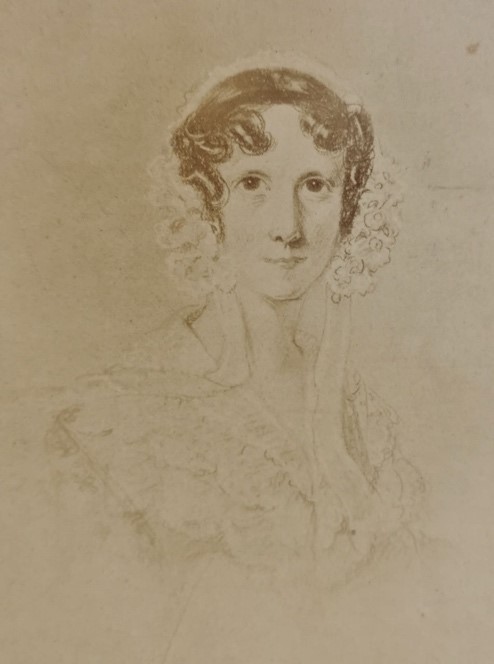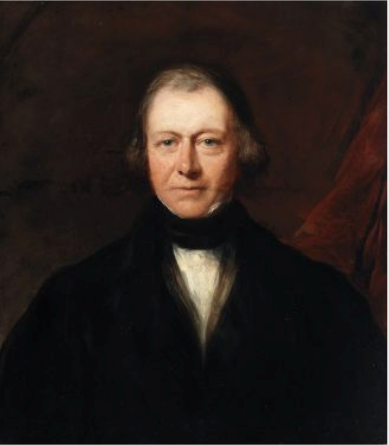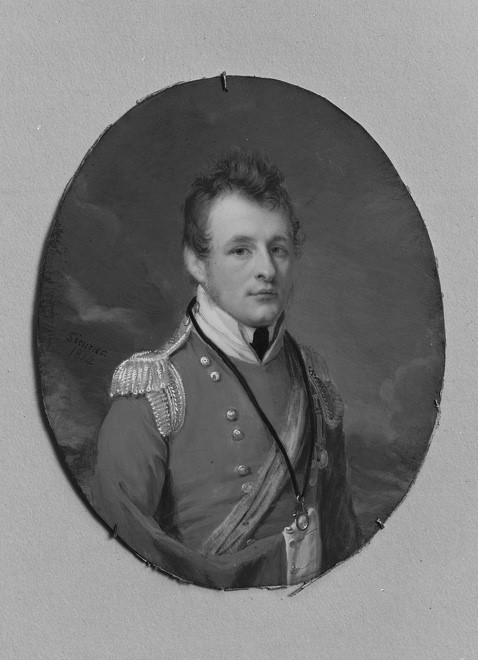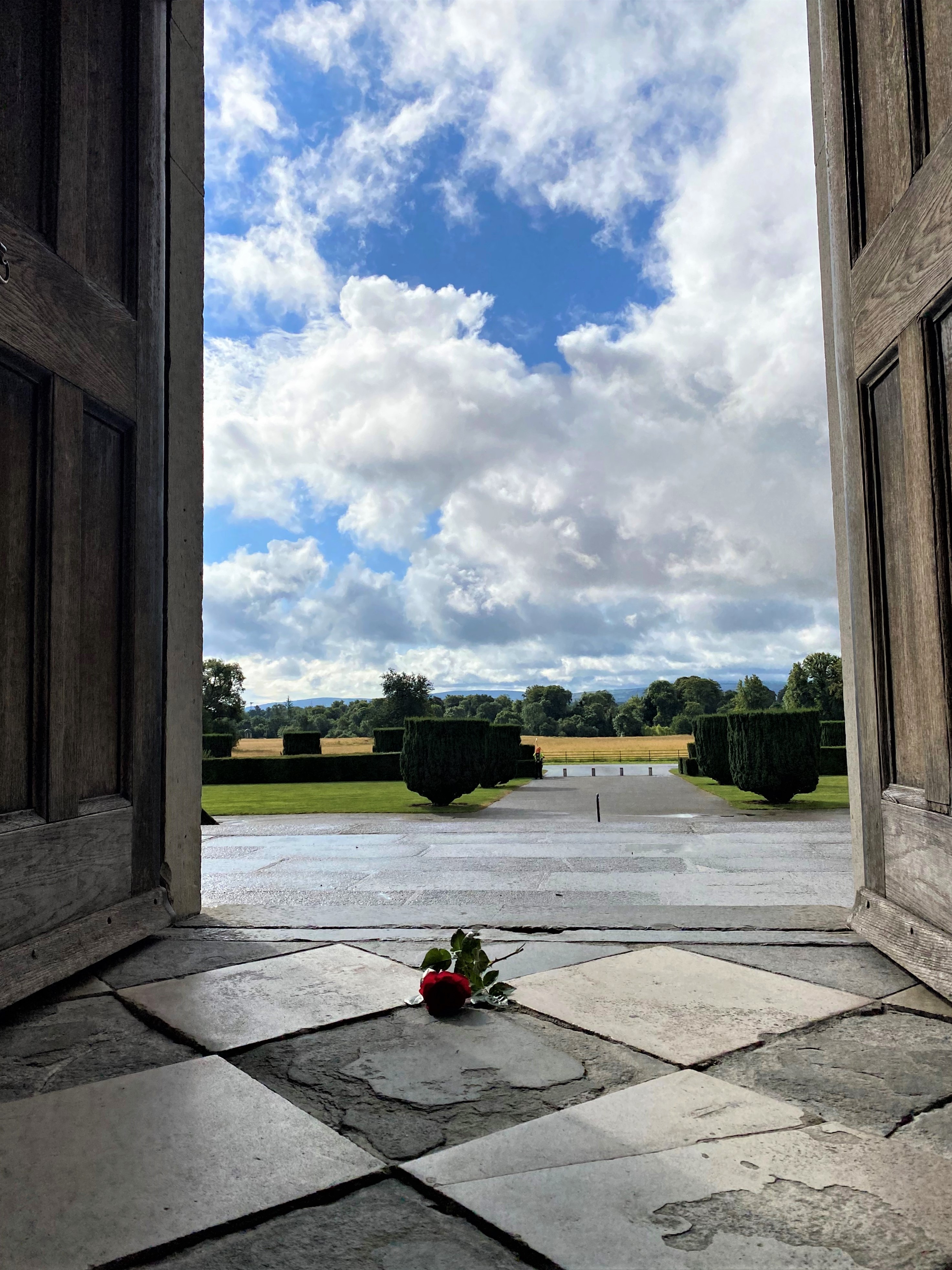‘No words can describe the affliction of this house.’
At six o’clock on the morning of 2nd August 1821 Lady Louisa Conolly took her last breath at Castletown, the home she had shaped and loved for over sixty years. Throughout the previous eight weeks her family had kept vigil at her bedside, witnessing her fortitude as she endured ‘violent torture’, eased by opium, before she rallied to arrange her affairs. This she did with ‘the most minute exactness’ and then gave directions for her funeral ‘as clearly and as calmly as if for a fête’.
Writing in the hours after her death, Anne Napier, wife of Lady Louisa’s nephew Richard Napier, was at a loss to express the grief of those assembled: ‘No words can describe the affliction of this house.’
Two hundred years on from Lady Louisa’s demise, her talents, character and material legacy at Castletown continue to delight visitors and inspire all those who care for the house, collections and parkland. As we mark this special anniversary and celebrate her life, it is high time to lay to rest a persistent myth about her passing. The opening lines of Brian Fitzgerald’s biography of Lady Louisa Conolly, published in 1950, describe how she died seated in a tent on the lawn in front of Castletown. Sadly, the reality was far from this romantic vision.
The true story of Lady Louisa’s last months and death, recorded in a series of letters sent from the house by Anne Napier to the Countess of Charleville, is much more harrowing, but adds to our admiration for this remarkable woman.

Anne Napier (née Stewart, 1780-1867), wife of Richard Napier who was born at Castletown in 1787. Her first husband, William Conolly Staples (d. 1798), had been the heir to Castletown but predeceased his uncle, Thomas Conolly. Courtesy of Claire Phillips, descendant of Anne’s brother-in-law, Henry Napier, who was born at Castletown in 1789.
Born Lady Louisa Lennox in London in December 1743, an English aristocrat of royal and French blood, she came to love Ireland above all. On her death she was hailed in the Dublin press as a ‘truly patriotic character’. Those who knew and loved Lady Louisa felt her loss profoundly. Universally respected, she had influenced the lives of generations at the highest and lowest levels of society and was long considered ‘an angel’ by her family, friends and the many who benefitted from her benevolence.
Lady Louisa’s vitality and drive in her seventies had given little impression of a body in decline: she regularly travelled to England to care for her Lennox relatives, made two continental sojourns and in 1819 planned to take her consumptive niece, Elizabeth Bennett, to the Mediterranean. This vigour made her circumstances at the end – confined to one position while she became ‘quite a skeleton’ – particularly difficult to witness.
The day after Louisa died, aged 77, the cause was reported in the newspapers as ‘a (presumed) psoas abscess on the hip’. Yet when she was first struck down with pain in October 1820, Sir Philip Crampton, president of the Royal College of Surgeons in Ireland, suspected a large, benign, ovarian tumour exerting pressure on nerves and causing inflammation. When Louisa recovered from that acute attack, Crampton issued strict instructions to refrain from traveling in a carriage in order to avoid jolting.

Sir Philip Crampton (1777-1858), eminent surgeon, who attended Lady Louisa Conolly. Oil portrait by Stephen Catterson Smith, courtesy of National Gallery of Ireland. http://onlinecollection.nationalgallery.ie/advancedsearch/objects/title%253ACrampton%2520
Nevertheless, in April 1821, when she was pain free and had fully recovered her strength to go walking, Lady Louisa was prepared to travel to England should anyone dear to her become ill. In fact, she had no notion of dying that summer and her chief concern was to comfort one of the nieces she had brought up, Lady Pakenham (née Louisa Staples), whose young daughter was then dying at Castletown.
At the beginning of June, the pain returned suddenly with extraordinary intensity due, Crampton believed, to the growing tumour pressing on the sciatic nerve. At first Lady Louisa’s death seemed imminent. She was told there was no hope and on 5th June dictated a very brief will, providing for her servants and leaving all her possessions to her niece Emily Napier (1783-1863), her sole executor. The daughter of Lady Louisa’s sister Lady Sarah Napier, as an infant Emily had been given to Louisa to be raised as if her own, and they had rarely been apart for thirty-seven years.
For weeks Lady Louisa spent ‘20 hours under the influence of opium & the other 4 in great pain’, before the doses could be reduced and she recovered some appetite. When her nephew, Richard Napier, a lawyer, arrived from London she made a codicil and appointed additional executors. She also gave Emily numerous verbal instructions on her wishes. Crampton, who considered Lady Louisa ‘the most estimable person that ever lived’, now held out a slim possibility of her having another interval of ‘ease and health’, but it was not to be.
Anne Napier explained that Lady Louisa’s suffering was exacerbated by the tumour obstructing the lymphatics and that this, rather than the tumour itself, might well cause her death. A month into her illness, the first of two abscesses appeared on her thigh, and these were opened and drained. The way in which her constitution bore up under ‘her protracted agonies’ surprised her doctors and even those familiar with Louisa’s strong mind and ‘uncommon character’. Despite all, on 22nd July her spirits were said to be remarkably good.
With great religious faith, Lady Louisa felt ‘positive joy’ at the prospect of being in the presence of her creator and reunited with her late siblings and beloved husband, Tom Conolly (d. 1803). As she approached death, she dwelt on human nature and making the best use of the qualities bestowed by God. She thanked God for her good nature, conceiving it as a gift so she could be of use to her fellow creatures.
From the onset of Lady Louisa’s last illness until her final moment, her ‘precious child’ Emily Napier barely left her side. In her lucid hours Lady Louisa focussed, as she had done throughout life, on others and particularly on Emily’s future, as she would have to leave her beloved home on Louisa’s demise. During her widowhood Louisa had planned for Emily’s financial independence and was reassured that she would have the emotional support of her five brothers, particularly George, Richard and Charles Napier, who were all present at Castletown when their aunt was dying.
Lady Louisa also took comfort in her final legacy to the poor of Celbridge, knowing that the new school she had planned, built and endowed would soon open to improve the life chances of their children. She had determined that Catholics and Protestants would learn trades and be educated together but receive religious instruction from their own priest or clergyman. (Before Emily departed to make a new life in England, she would spend three months ensuring her late aunt’s plans for the school were accomplished and three hundred children enrolled.)
For most of July Lady Louisa’s family kept a secret from her. Lady Sarah Napier, aged 76 and blind for many years, had been brought from London and was in the house. It was thought best not to shock Lady Louisa but to prepare her gradually for the final meeting with the sister she had regarded as ‘my other self’. Only in the last week was Lady Sarah taken to Louisa.
On 29th July Anne Napier reported that Lady Louisa was not suffering but that Crampton had just left Castletown, warning that within a few days she was likely to ‘sink fast’. For many hours before she died on 2nd August she seemed incapable of speech, but ‘recovered her senses & some power of articulation in the last moments’. In the hours after Lady Louisa passed away in Emily’s arms, Lady Sarah Napier, the only surviving Lennox sibling, wept over the loss of her devoted sister.
Maria Edgeworth has left a beautifully observed portrait of Lady Louisa in old age. Well established as a literary celebrity when she came to stay at Castletown in 1815, Edgeworth was familiar with Lady Louisa’s character through her friends, the Pakenham family in Co. Westmeath. She found Lady Louisa:
‘one of the most respectable, amiable, and even at seventy, I may say, charming persons I ever saw or heard. Having known all the most worthy, as well as the most celebrated people who have lived for the last fifty years, she is full of characteristic anecdote, and fuller of that indulgence for human creatures which is consistent with a thorough knowledge of the world, and a quick perception of all the foibles of human nature – with a high sense of religion, without the slightest tincture of ostentation, asperity, or bigotry.’
Edgeworth remarked, ‘She is all that I could have wished to represent in Mrs. Hungerford’, a noble, virtuous character in Patronage (1814), who resembles Lady Louisa in many ways.

General Sir George Napier (1784-1855) Miniature on ivory of General Sir George Napier (1784-1855) by Francois Sieurac, 1814. He had lost his right arm in battle in 1812. https://collections.vam.ac.uk/item/O1067793/general-sir-george-thomas-napier-portrait-miniature-sieurac/
The Napiers, who cared for Lady Louisa in her last days, would reflect on their aunt’s extraordinary qualities for the rest of their lives. Of the five brothers raised in Celbridge by Lady Sarah and Hon. George Napier, with support from the Conollys, three – Charles, George and William – all heroes of the Peninsular War (1808-14), became generals.
In 1851, Richard Napier inscribed a letter Lady Louisa had written to George in 1809 when it was believed their brother Charles had been killed in battle:
‘Lady Louisa Conolly: One that never failed, nor faltered, nor rested when good was to be done, or sorrow or calamity alleviated. She has been dead 30 years and every year since only opens my mind more & more to the splendour of her moral character’.
Charles Napier had regarded Aunt Conolly as the core strength of the entire family in times of adversity, writing in 1808, ‘she is like a pillar that we know will not break’. When Anne Napier published Woman’s rights and duties in 1840, she recalled Lady Louisa’s ability to empower others: ‘strength came in her presence: she seemed to bring with her irresistible evidence that anything could be done, which she said ought to be done’. In 1837 George, then governor of the Cape of Good Hope, wrote a long account in his memoirs of Lady Louisa’s character and the outpouring of grief of the people of Celbridge on her death.
As for Emily Napier, within a year of Lady Louisa’s death she had acted to preserve the memory of her aunt for future generations. In August 1822, she dedicated to her young nieces and nephews a collection of extracts from Lady Louisa’s letters, demonstrating her admirable qualities and sense of religion. We are indebted to Emily and successive generations of Napier women who preserved and transcribed hundreds of Lady Louisa’s letters to Lady Sarah Napier, allowing insights into myriad aspects of her life and life at Castletown in the Georgian era.
Two centuries have passed since George Napier stood behind his aunt’s coffin in the entrance hall of Castletown and gave the order for the great door to be opened for her final journey to the Conolly family vault. Yet Lady Louisa’s spirit lives on in the house and the landscape she designed, still contributing to the pleasure and wellbeing of so many.
Dr. Ruth Thorpe
* University of Nottingham, Manuscripts and Special Collections, MY 289


